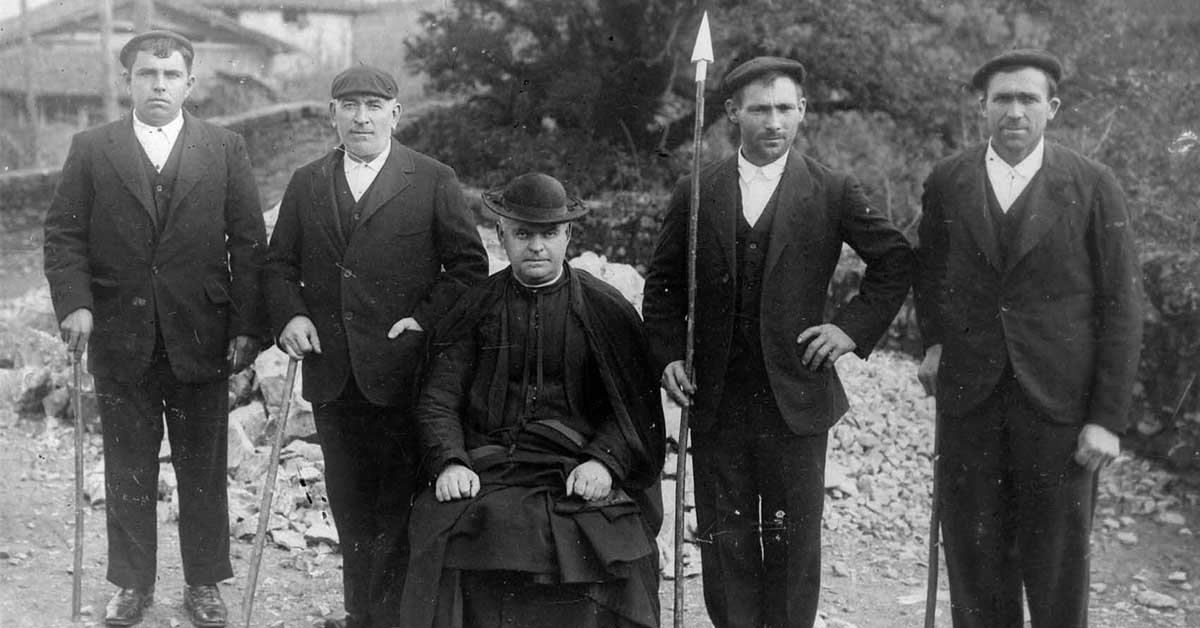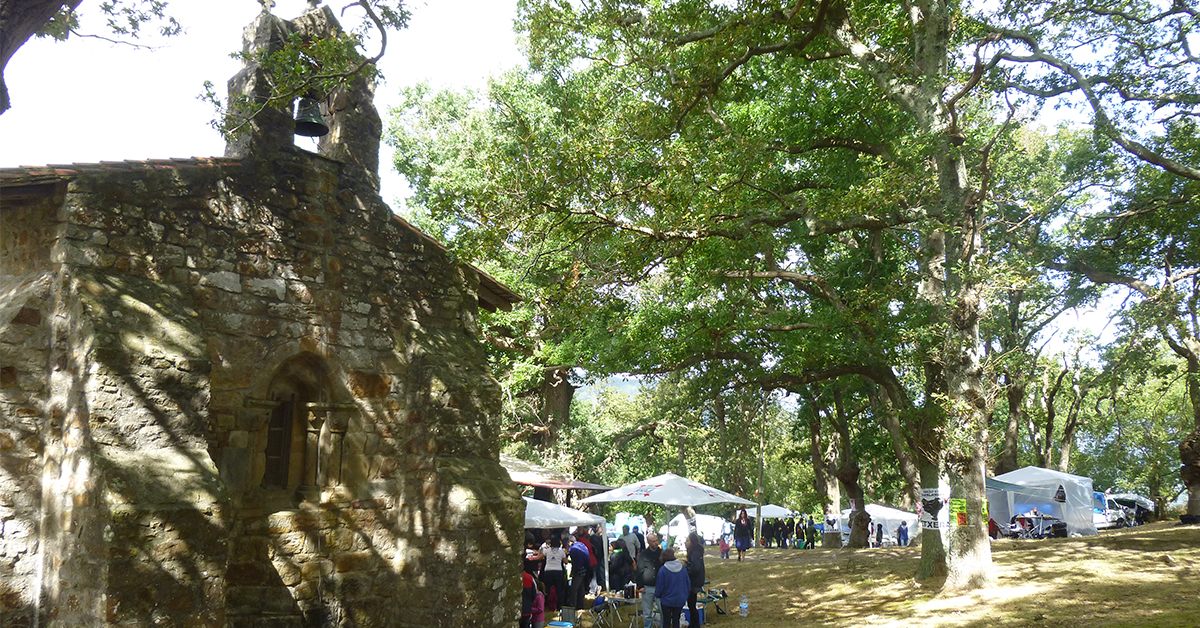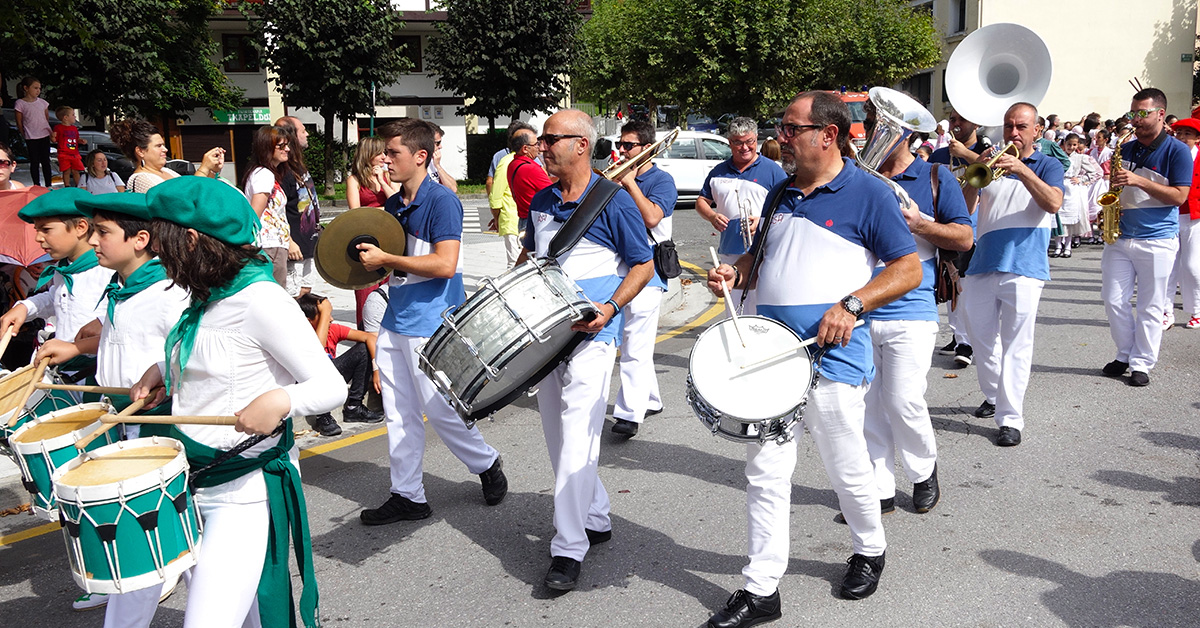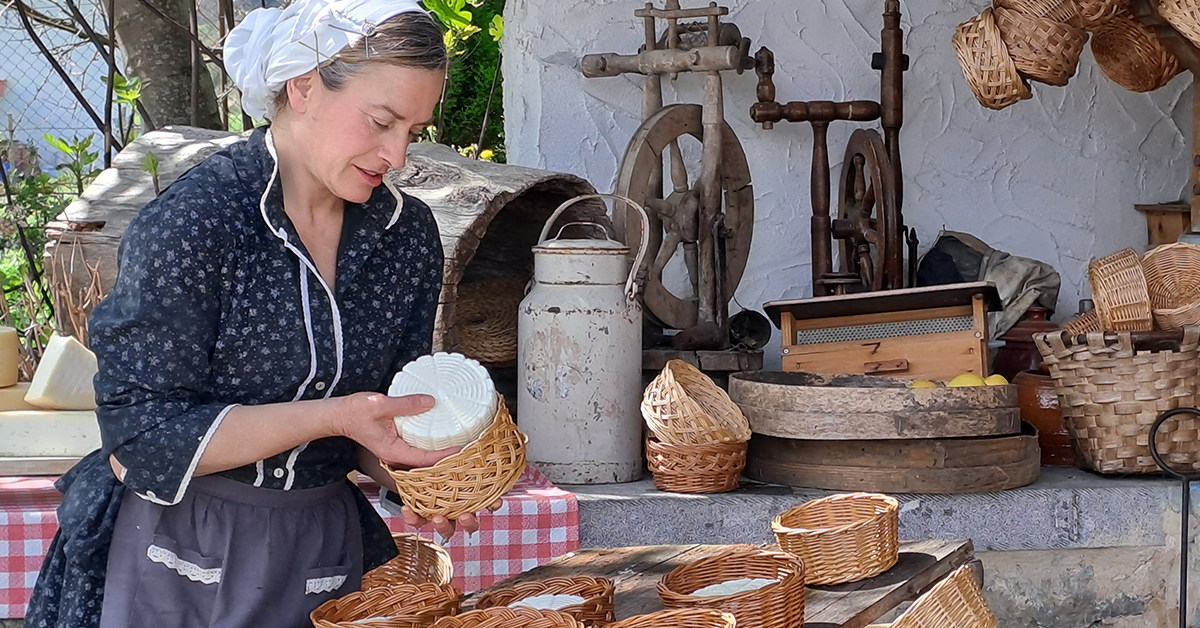Basque ethnography at a glance
The 29th of September is an important date on the Basque calendar, as it is the feast day of St. Michael, our patron saint, and the best known and beloved of the archangels in heaven.
However, the date was also known for practical reasons, as it marked the end of the farming year in popular culture. In other words and going even further back in time, it is the Christianised festivity of the equinox when summer ended and winter began.
In many places, that day was the start of the period that leaf litter or fern could be gathered from the common uplands, the livestock were taken to the winter pastures, the start of the work to get the forges or cold chambers ready, and the renewal of leases of mills, taverns or dwellings. And, among other interesting facts, that of renewing the posts of the elected officials of the village.
Hidden on one of the hills that span the eastern slopes of Mount Jata, the chapel of St. Michael of Zumetzaga stands in an isolated and mysterious setting. Ancient oaks, chestnut trees and the odd age-old holm oak provide the shade protecting this simple, but historically important chapel; it is believed to date back to the end of the 12th century and is in the late Romanesque style. The Zumetzaga farmstead, the guardian of this gem, can be found beside it.
The chapel faces east and is a modest building, consisting of a single rectangular nave, ending in a almost square apse. This is shored up by sturdy buttresses outside that give a peculiar look to the building. All the walls, along with the vaults, are in stone masonry and there is only an opening on each façade. Three of them are entrances, and there is a small window in the chevet which lets in the little light to the dimly lit chapel. That, and the south-facing door, are the most interesting features of the building. (more…)
We may not be aware due to the current inertia of daily life, but music is something that is usually at the centre of entertainment and, particularly, at festivities, weekends and different celebration.
Even though the need to play melodies, for different reasons, can be traced far back in time, we can basically differentiate between two uses for music performed in the street: entertainment or leisure and enjoyment; and ritual (religious and/or secular). Furthermore, whether travelling or mobile, on the one hand, and fixed or static, on the other, it coincides with the presence of the people in the spotlight, the musicians: who can be literate and illiterate; enthusiasts, professionals and beggars; instrumental or with voice accompaniment; locals or incomers.
Talking about traditional cheesemaking from an ethnographic standpoint subliminally brings to mind the picture of a shepherd in his hut pressing the curd into a wooden mould to extract as much whey as possible; that was at least the typical image mentioned in Gorbea, Aralar, Urbasa, Irati… and with good reason.
However, it should be noted that that was not the same everywhere. If our land is noted for something – and which makes us clearly stand out from other regions and other geographical areas – is that when it comes to analysing the methods and tools that our forebears used to make cheese, we discover that we here boasted a variety and wealth ethnographically speaking that was not found to such a diverse extent elsewhere. We just have to look at the moulds for draining the curd that were used in the past; they were made from wood (with and without a bottom, with a fixed or adjustable rim, made out of chestnut, beech, birch, etc.), ceramic, tin, wicker… (more…)





